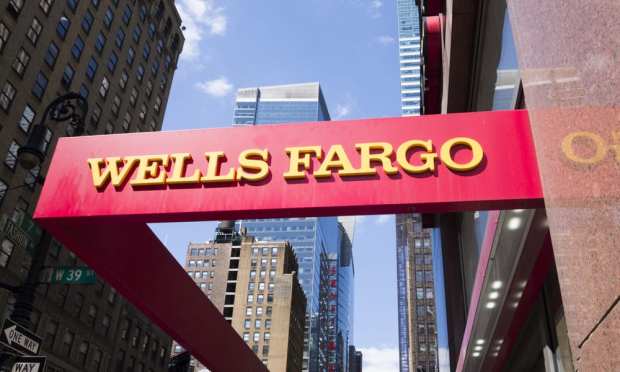Wells Fargo Debit/Credit Purchases Down as COVID-19 Hits

Wells Fargo’s first-quarter results showed the impact of reduced customer spending amid the continued impact of the coronavirus, and reserves taken in anticipation of loan losses.
Earnings per share were a penny, where the Street had expected 38 cents. The bank’s net income came in at $563 million in the quarter, where it had been $5.9 billion in the same period a year ago.
Consolidated revenues slipped 18 percent year over year to $21.6 billion and consensus expectations had been $19.4 billion.
The company set aside $3.8 billion to cover possible loan losses, where that figure had been $3 billion in the previous period.
And that may not be enough. As stated on the post-earnings conference call with analysts, CEO Charles Scharf said, “if confidence does deteriorate and the shelter-in-place orders stay on for longer, which is possible, then it wouldn’t surprise me that loss estimates would have to go up from this point.”
Echoing some activity at another big bank that reported Tuesday — JPMorgan — Wells said that payments were being deferred across auto loans and mortgages. Chief Financial Officer John Shrewsberry estimated the total deferrals so far to be the equivalent of $3 billion in principal. Commercial clients, the company said, utilized more than $80 billion of loan commitments in March.
Overall credit card loans were down by $2.4 billion. Overall non-performing assets were up 13 percent from the fourth quarter of 2019, tied to the pandemic, and stood at $6.4 billion at the end of the most recent period.
The quarterly supplemental materials from the company released Tuesday showed that net charge-offs were $909 million, or 38 bps of annualized average loans, up $140 million from the prior period.
Wells Fargo said that industries and loan books with “escalated monitoring” included $14.3 billion of oil and gas loans and $27.8 billion of retail loans outstanding. In the case of the latter vertical’s loan outstanding, 18 percent were tied to department stores, 21 percent to restaurants and 12 percent to building materials, garden equipment and supply dealers. The company also said that it had $16.2 billion of entertainment and recreation loans outstanding.
Drilling down a bit into transactions, card fees were down 13 percent from the fourth quarter of 2019 to $892 million, due in part to lower consumer spending amid the pandemic.
The firm said that debit card point of sale (POS) purchase volumes were down 5 percent due to post-holiday seasonality and COVID-19, to $90 billion; general-purpose credit card purchase volumes were off 13 percent from the fourth quarter of the year to a recent $18.2 billion, also on reduced customer spending.
The company said that digital (which includes online and mobile) customers were up 3 percent year over year to 30.9 million.
In the conference call with analysts, CEO Scharf provided more color on the quarter’s activity, stating that the company had extended over 900,000 fee waivers equivalent to $30 million.
Shrewsberry commented on the call that “During these challenging times, we expect loan and deposit growth could continue, but cannot provide guidance on the level of growth.” He added that “we’re actively working to create balance sheet capacity to help our customers. It’s worth noting that the high rate of growth in utilization by our commercial clients is backed off since credit markets have reopened.”
With a nod to digital activity, the CFO said that “our customers have shifted to depositing checks through our mobile app and the dollar volume of mobile checks deposited increased over 40 percent in March, compared with February.” With granular detail on consumer spending, he said that grocery and pharmacy spend grew in March, where all other categories were down from a year ago.
“Similar to credit card, debit card spending shifted significantly to grocery in March, but the growth in this category started to slow in the last week of the month,” he said.
